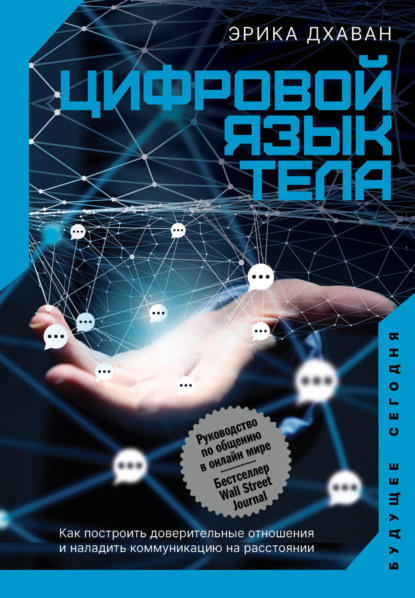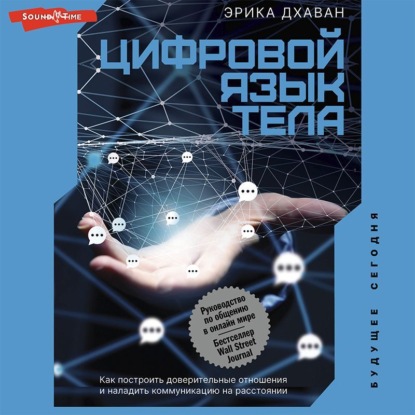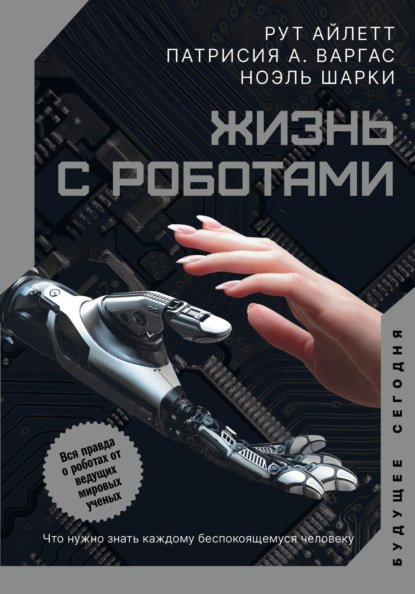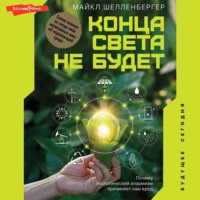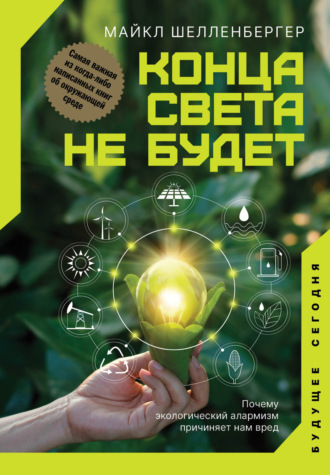
Полная версия
Конца света не будет. Почему экологический алармизм причиняет нам вред
210
Chris Wilcox, Melody Puckridge, Gamar A. Schuyler et al., “A Quantitative Analysis Linking Sea Turtle Mortality and Plastic Debris Ingestion.”
211
Iliana Magra, “Whale Is Found Dead in Italy with 48 Pounds of Plastic in Its Stomach,” New York Times, April 2, 2019, https://www.nytimes.com. Matthew Haag, “64 Pounds of Trash Killed a Sperm Whale in Spain, Scientists Say,” New York Times, April 12, 2018, https://nytimes.com. Daniel Victor, “Dead Whale Found With 88 Pounds of Plastic Inside Body in the Philippines,” New York Times, March 18, 2019.
212
Seth Borenstein, “Science Says: Amount of Straws, Plastic Pollution Is Huge,” Associated Press, April 21, 2018, https://apnews.com.
213
Michelle Paleczny, Edd Hammill, Vasiliki Karpouzi, and Daniel Pauly, “Population Trend of the World’s Monitored Seabirds, 1950–2010,” PLOS ONE 10, no. 6 (June 2015): e0129342, https://journals.plos.org/plosone/article/file?id=10.1371/journal.pone.0129342&type=printable.
214
Laura Parker, “Nearly Every Seabird on Earth Is Eating Plastic,” National Geographic, September 2, 2015, https://www.nationalgeographic.com.
215
Seth Borenstein, “Science Says: Amount of Straws, Plastic Pollution Is Huge.”
216
Chris Wilcox, Erik Van Sebille, and Britta Denise Hardesty, “Threat of Plastic Pollution to Seabirds Is Global, Pervasive, and Increasing,” Proceedings of the National Academy of Sciences of the United States of America 112, no. 38 (August 2015): 11899–904, https://doi.org/10.1073/pnas.1502108112.
217
Claudia Giacovelli, Anna Zamparo, Andrea Wehrli et al., Single-Use Plastics: A Roadmap for Sustainability, United Nations Environment Programme, 2018, https://wedocs.unep.org/bitstream/handle/20.500.11822/25496/singleUsePlastic_sustainability.pdf?sequence=1&isAllowed=y, 12.
218
Susan Freinkel, Plastics: A Toxic Love Story (New York: Houghton Mifflin Harcourt, 2011), 7–8.
219
Roland Geyer, Jenna R. Jambeck, and Kara Lavender Law, “Production, Use, and Fate of All Plastics Ever Made,” Science Advances 3, no. 7 (July 19, 2017): e1700782, http://advances.sciencemag.org/content/3/7/e1700782.
220
Jambeck et al., “Plastic Waste Inputs from Land into the Ocean.”
221
Jambeck et al., “Plastic Waste Inputs from Land into the Ocean.”
222
W. C. Li, H. F. Tse, and L. Fok, “Plastic Waste in the Marine Environment: A Review of Sources, Occurrence and Effects,” Science of the Total Environment 566–567 (2016): 333–49, http://dx.doi.org/10.1016/j.scitotenv.2016.05.084.
223
L. Lebreton, B. Slat, F. Ferrari et al., “Evidence That the Great Pacific Garbage Patch Is Rapidly Accumulating Plastic,” Scientific Reports, 2018, no. 8 (March 22, 2018), article no. 4666, https://doi.org/10.1038/s41598-018-22939-w.
224
Christine Figgener (sea turtle biologist) in conversation with the author, November 6, 2019.
225
Christine Figgener (sea turtle biologist) in conversation with the author, November 6, 2019.
226
“Facts and Figures About Materials, Waste and Recycling,” Environmental Protection Agency, October 30, 2019, accessed January 2, 2019, https://www.epa.gov/facts-and-figures-about-materials-waste-and-recycling/plastics-material-specific-data#PlasticsTableandGraph.
227
Changing the Way We Use Plastics, European Commission, 2018, https://ec.europa.eu/environment/waste/pdf/pan-european-factsheet.pdf.
228
Christine Figgener (sea turtle biologist) in conversation with the author, November 6, 2019.
229
Mike Ives, “China Limits Waste. ‘Cardboard Grannies’ and Texas Recyclers Scramble,” New York Times, November 25, 2017, https://www.nytimes.com.
230
Mike Ives, “Recyclers Cringe as Southeast Asia Says It’s Sick of the West’s Trash,” New York Times, June 7, 2019, https://www.nytimes.com.
231
Mike Ives, “Recyclers Cringe as Southeast Asia Says It’s Sick of the West’s Trash,” New York Times, June 7, 2019, https://www.nytimes.com.
232
Motoko Rich, “Cleansing Plastic from Oceans: Big Ask for a Country That Loves Wrap,” New York Times, June 27, 2019, https://www.nytimes.com.
233
Roland Geyer et al., “Production, use, and fate of all plastics ever made,” Science Advances 3, no. 7 (July 19, 2017), http://advances.sciencemag.org/content/3/7/e1700782.
234
Christine Figgener (sea turtle biologist) in conversation with the author, November 6, 2019.
235
Harvey Black, “Rethinking Recycling,” Environmental Health Perspectives 103, no. 11 (1995): 1006–1009, https://www.ncbi.nlm.nih.gov/pmc/articles/PMC1519181/pdf/envhper00359-0034-color.pdf.
236
Benjamin Brooks, Kristen Hays, and Luke Milner, Plastics recycling: PET and Europe lead the way, Petrochemicals special report (S&P Global Platts, September 2019), https://www.spglobal.com/platts/plattscontent/_assets/_files/en/specialreports/petrochemicals/plastic-recycling-pet-europe.pdf.
237
Daniel Hoornweg and Perinaz Bhada-Tata, What a Waste: A Global Review of Solid Waste Management, World Bank Urban Development Series, Knowledge Papers no. 15, March 2012, https://openknowledge.worldbank.org/bitstream/handle/10986/17388/68135.pdf?sequence=8&isAllowed=y/, 46.
238
Jambeck et al., “Plastic Waste Inputs from Land into the Ocean.”
239
Marcus Eriksen, Laurent C. M. Lebreton, Henry S. Carson et al., “Plastic Pollution in the World’s Oceans: More than 5 Trillion Plastic Pieces Weighing over 250,000 Tons Afloat at Sea,” PLOS ONE 9, no. 12 (December 10, 2014): e111913, https://journals.plos.org/plosone/article/file?id=10.1371/journal.pone.0111913&type=printable. As indicated in the title, the authors’ final estimate of the total number of plastic pieces in the ocean came in at 5 trillion particles – both macroplastic and microplastic – weighing 269,000 tons.
240
Marcus Eriksen, Laurent C. M. Lebreton, Henry S. Carson et al., “Plastic Pollution in the World’s Oceans: More than 5 Trillion Plastic Pieces Weighing over 250,000 Tons Afloat at Sea,” PLOS ONE 9, no. 12 (December 10, 2014): e111913, https://journals.plos.org/plosone/article/file?id=10.1371/journal.pone.0111913&type=printable. As indicated in the title, the authors’ final estimate of the total number of plastic pieces in the ocean came in at 5 trillion particles – both macroplastic and microplastic – weighing 269,000 tons.
241
Marcus Eriksen, Laurent C. M. Lebreton, Henry S. Carson et al., “Plastic Pollution in the World’s Oceans: More than 5 Trillion Plastic Pieces Weighing over 250,000 Tons Afloat at Sea,” PLOS ONE 9, no. 12 (December 10, 2014): e111913, https://journals.plos.org/plosone/article/file?id=10.1371/journal.pone.0111913&type=printable. As indicated in the title, the authors’ final estimate of the total number of plastic pieces in the ocean came in at 5 trillion particles – both macroplastic and microplastic – weighing 269,000 tons.
242
Marcus Eriksen, Laurent C. M. Lebreton, Henry S. Carson et al., “Plastic Pollution in the World’s Oceans: More than 5 Trillion Plastic Pieces Weighing over 250,000 Tons Afloat at Sea,” PLOS ONE 9, no. 12 (December 10, 2014): e111913, https://journals.plos.org/plosone/article/file?id=10.1371/journal.pone.0111913&type=printable. As indicated in the title, the authors’ final estimate of the total number of plastic pieces in the ocean came in at 5 trillion particles – both macroplastic and microplastic – weighing 269,000 tons.
243
Collin P. Ward, Cassia J. Armstrong, Anna N. Walsh, Julia H. Wash, and Christopher M. Reddy, “Sunlight Converts Polystyrene to Carbon Dioxde and Dissolved Organic Carbon,” Environmental Science Technology Letters 6, no. 11 (October 10, 2019): 669–674, https://doi.org/10.1021/acs.estlett.9b00532.
244
“Sunlight Degrades Polystyrene Faster than Expected,” National Science Foundation, October 18, 2019, https://www.nsf.gov/discoveries/disc_summ.jsp?cntn_id=299408&org=NSF&from=news.
245
Collin P. Ward, “Sunlight Converts Polystyrene to Carbon Dioxide and Dissolved Organic Carbon.”
246
Collin P. Ward, “Sunlight Converts Polystyrene to Carbon Dioxide and Dissolved Organic Carbon.”
247
Emily A. Miller, Loren McClenachan, Roshikazu Uni et al., “The Historical Development of Complex Global Trafficking Networks for Marine Wildlife,” Science Advances 5, no. 3 (March 2019): eaav5948, http://dx.doi.org/10.1126/sciadv.aav5948.
248
Martha Chaiklin, “Imports and Autarky: Tortoiseshell in Early Modern Japan,” in Luxury and Global Perspective: Objects and Practices, 1600–2000, edited by Bernd-Stefan Grewe and Karen Hoffmeester (Cambridge, UK: Cambridge University Press, 2016), 218–21, 230, 236.
249
Martha Chaiklin, “Imports and Autarky: Tortoiseshell in Early Modern Japan,” in Luxury and Global Perspective: Objects and Practices, 1600–2000, edited by Bernd-Stefan Grewe and Karen Hoffmeester (Cambridge, UK: Cambridge University Press, 2016), 218–21, 230, 236.
250
Stephanie E. Hornbeck, “Elephant Ivory: An Overview of Changes to Its Stringent Regulation and Considerations for Its Identification,” AIC Objects Specialty Group Postprints 22 (2015): 101–22, http://resources.conservation-us.org/osg-postprints/wp-content/uploads/sites/8/2015/05/osg022-08vII.pdf.
251
Stephanie E. Hornbeck, “Elephant Ivory: An Overview of Changes to Its Stringent Regulation and Considerations for Its Identification,” AIC Objects Specialty Group Postprints 22 (2015): 101–22, http://resources.conservation-us.org/osg-postprints/wp-content/uploads/sites/8/2015/05/osg022-08vII.pdf.
252
“Ivory: Where It Comes From, Its Uses and the Modes of Working It,” New York Times, August 14, 1866, https://timesmachine.nytimes.com.
253
“Ivory: Where It Comes From, Its Uses and the Modes of Working It,” New York Times, August 14, 1866, https://timesmachine.nytimes.com.
254
“Ivory: Where It Comes From, Its Uses and the Modes of Working It,” New York Times, August 14, 1866, https://timesmachine.nytimes.com.
255
“The World’s Ivory Trade,” New York Times, July 23, 1882, https://timesmachine.nytimes.com.
256
“The World’s Ivory Trade,” New York Times, July 23, 1882, https://timesmachine.nytimes.com.
257
“The World’s Ivory Trade,” New York Times, July 23, 1882, https://timesmachine.nytimes.com.
258
Chaiklin, “Imports and Autarky: Tortoiseshell in Early Modern Japan.”
259
Freinkel, Plastics: A Toxic Love Story.
260
Terri Byrne, “Ivoryton’s Keys Are Musical,” New York Times, December 25, 1977, https://timesmachine.nytimes.com.
261
Susan Freinkel, “A Brief History of Plastic’s Conquest of the World,” Scientific American, May 29, 2011, https://www.scientificamerican.com.
262
Christine Figgener (sea turtle biologist) in discussion with the author, November 6, 2019.
263
According to the IUCN, “Disease appears to be a problem in some populations in some years, with diphtheritic stomatitis (caused by the bacteria Corynebacterium spp.) and the blood parasite Leucocytozoon tawaki, formerly only known from Fiordland penguins, causes of mortality for chicks… Human disturbance, particularly from unregulated tourists at breeding areas, negatively affects energy budgets, fledgling weight and probability of survival.” “Yellow-Eyed Penguin, Megadyptes antipodes,” IUCN Red List of Threatened Species 2018, BirdLife International, 2018, http://dx.doi.org/10.2305/IUCN.UK.2018-2.RLTS.T22697800A132603494.en.
264
“Southern Royal Albatross, Diomedea epomophora,” IUCN Red List of Threatened Species 2018, BirdLife International, 2018, http://dx.doi.org/10.2305/IUCN.UK.2018-2.RLTS.T22698314A132641187.en.
265
Thomas Mattern, “New Zealand’s Mainland Yellow-Eyed Penguins Face Extinction Unless Urgent Action Taken,” University of Otago, May 17, 2017, https://www.otago.ac.nz/news/news/otago648034.html.
266
P. E. Michael, R. Thomson, C. Barbraud et al., “Illegal Fishing Bycatch Overshadows Climate as a Driver of Albatross Population Decline,” Marine Ecology Progress Series 579 (September 2017): 185–99, http://dx.doi.org/10.3354/meps12248.
267
Bugoni et al., “Marine Debris and Human Impacts on Sea Turtles in Southern Brazil.”
268
Christine Figgener (sea turtle biologist) in conversation with the author, November 6, 2019.
269
A. Abreu-Grobois and P. Plotkin (IUCN SSC Marine Turtle Specialist Group), “Olive Ridley, Lepidochelys olivacea,” IUCN Red List of Threatened Species 2008, BirdLife International, http://dx.doi.org/10.2305/IUCN.UK.2008.RLTS.T11534A3292503.en.
270
Nathaniel L. Bindoff, William W. L. Cheung, James G. Kairo et al., “Changing Ocean, Marine Ecosystems, and Dependent Communities,” in IPCC Special Report on the Ocean and Cryosphere in a Changing Climate, Intergovernmental Panel on Climate Change, 2019, https://www.ipcc.ch/site/assets/uploads/sites/3/2019/11/09_SROCC_Ch05_FINAL-1.pdf.
271
The State of World Fisheries and Aquaculture: Meeting the Sustainable Development Goals, Food and Agriculture Organization of the United Nations, 2018, http://www.fao.org/3/I9540EN/i9540en.pdf, vii.
272
“Sharks,” IUCN Red List of Threatened Species, https://www.iucnredlist.org/search?query=sharkspercent20&searchType=species. Sandra Altherr and Nicola Hodgins, Small Cetaceans, Big Problems: A Global Review of the Impacts of Hunting on Small Whales, Dolphins and Porpoises, Pro Wildlife, Animal Welfare Institute, and Whale and Dolphin Conservation, November 2018, https://awionline.org/sites/default/files/publication/digital_download/AWI-ML-Small-Cetaceans-Report.pdf.
273
Christine Figgener (sea turtle biologist) in conversation with the author, November 6, 2019.
274
Sophia Rosenbaum, “She Recorded That Heartbreaking Turtle Video. Here’s What She Wants Companies like Starbucks to Know About Plastic Straws,” Time, July 17, 2018, https://time.com.
275
Christine Figgener (sea turtle biologist) in conversation with the author, November 6, 2019.
276
Rebecca L. C. Taylor, “Bag Leakage: The Effect of Disposable Carryout Bag Regulations on Unregulated Bags,” Journal of Environmental Economics and Management 93 (January 2019): 254–71, https://doi.org/10.1016/j.jeem.2019.01.001.
277
Bjørn Lomborg, “Sorry, Banning Plastic Bags Won’t Save Our Planet,” The Globe and Mail, June 20, 2019, https://www.theglobeandmail.com.
278
Eriksen et al., “Plastic Pollution in the World’s Oceans: More than 5 Trillion plastic Pieces Weighing over 250,000 Tons Afloat at Sea.”
279
For the specific case of carbonated drinks, see Franklin Associates, Life Cycle Inventory of Three Single-Serving Soft Drink Containers, report prepared for PET Resin Association, 2009, http://www.petresin.org/pdf/FranklinLCISodaContainers2009.pdf. For a general review, see Pan Demetrakakes, “This Material, or That?” Packaging Digest, March 11, 2015, www.packagingdigest.com/beverage-packaging/material-or.
280
Christine Figgener (sea turtle biologist) in conversation with the author, November 6, 2019.
281
Frida Røyne and Johanna Berlin, “The Importance of Including Service Life in the Climate Impact Comparison of Bioplastcs and Fossil-Based Plastics,” Research Institutes of Sweden, Report no. 23, 2018, http://ri.diva-portal.org/smash/get/diva2:1191391/FULLTEXT01.pdf.
282
A lifecycle assessment found that an engine component storage box made from conventional plastic could last six times as long as a bioplastics box under development. Ibid.
283
Christine Figgener (sea turtle biologist) in conversation with the author, November 6, 2019.
284
“Composting PLA and TPS results in higher impacts than landfilling in seven categories: smog, acidification, carcinogenics, non-carcinogenics, respiratory effects, ecotoxicity, and fossil fuel depletion.” Troy A. Hottle, Melissa M. Bilec, and Amy E. Landis, “Biopolymer Production and End of Life Comparisons Using Life Cycle Assessment,” Resources, Conservation and Recycling 122 (July 2017): 295–306, https://doi.org/10.1016/j.resconrec.2017.03.002.
285
Kunnika Changwichan, Thapat Silalertruksa, and Shabbir H. Gheewala, “Eco-Efficiency Assessment of Bioplastics Production Systems and Endof-Life Options,” Sustainability 10, no. 4 (March 2018): 952, https://doi.org/10.3390/su10040952.
286
Daniel Posen, Paulina Jaramillo, Amy E. Landis, and W. Michael Griffin, “Greenhouse Gas Mitigation for U.S. Plastics Production: Energy First, Feedstocks Later,” Environmental Research Letters 12, no. 3 (December 2017), https://doi.org/10.1088/1748-9326/aa60a7.
287
Christine Figgener (sea turtle biologist) in conversation with the author, November 6, 2019.
288
Marydele Donnelly, “Trade Routes for Tortoiseshell,” State of the World’s Sea Turtles (SWOT), Report Volume 3, February 1, 2008, https://www.seaturtlestatus.org/articles/2008/trade-routes-for-tortoiseshell. Associated Press, “Japan Agrees to End Endangered Hawksbill Turtle Imports After ’92,” Los Angeles Times, June 19, 1991, https://www.latimes.com.
289
Tina Deines, “Endangered hawksbill turtle shell trade is much bigger than scientists ever suspected,” National Geographic, March 27, 2019, https://www.nationalgeographic.com.
290
Christine Figgener (sea turtle biologist) in conversation with the author, November 6, 2019.
291
“World’s Biggest Producer of Plastic to Curtail Its Use,” Bloomberg News, January 19, 2020, https://www.bloomberg.com
292
Elizabeth Kolbert, The Sixth Extinction: An Unnatural History (New York: Henry Holt & Company, 2014), 266–267.
293
“World Is ‘on Notice’ as Major UN Report Shows One Million Species Face Extinction,” UN News, May 6, 2019, https://news.un.org/en/story/2019/05/1037941. “UN Report: Nature’s Dangerous Decline ‘Unprecedented’; Species Extinction Rates ‘Accelerating,’ ” Sustainable Development Goals, May 6, 2019, https://www.un.org/sustainabledevelopment/blog/2019/05/nature-decline-unprecedented-report.
294
“UN Report: Nature’s Dangerous Decline ‘Unprecedented.’ ”
295
“UN Report: Nature’s Dangerous Decline ‘Unprecedented.’ ”
296
Kolbert, The Sixth Extinction.
297
Luke J. Harmon and Susan Harrison, “Species Diversity Is Dynamic and Unbounded at Local and Continental Scales,” American Naturalist 185, no. 5 (2015): 584–93, https://doi.org/10.1086/680859. See also Thomas J. Stohlgren, John D. Barnett, and John T. Kartesz, “The Rich Get Richer: Patterns of Plant Invasions in the United States,” Frontiers in Ecology and the Environment 1, no. 1 (2003): 11–14, https://doi.org/10.2307/3867959. Scientists have known for decades that the evidence “overwhelmingly supports the openness of communities to new species, even at the small spatial scales where species interact and the influences of competition and resource supply should be strongest.” For a recent discussion, see Rubén G. Mateo, Karel Mokany, and Antoine Guisan, “Biodiversity Models: What If Unsaturation Is the Rule?” Trends in Ecology & Evolution 32, no. 8 (2017): 556–66, https://doi.org/10.1016/j.tree.2017.05.003.
298
Fangliang He and Stephen P. Hubbell, “Species – Area Relationships Always Overestimate Extinction Rates from Habitat Loss,” Nature 473 (2011): 368–371, https://doi.org/10.1038/nature09985.
299
Dov F. Sax, Steven D. Gaines, and James Brown, “Species Invasions Exceed Extinctions on Islands Worldwide: A Comparative Study of Plants and Birds,” The American Naturalist 160, no. 6 (2002): 766–783, https://doi.org/10.1086/343877.
300
Chris D. Thomas, “Rapid Acceleration of Plant Speciation During the Anthropocene,” Trends in Ecology & Evolution 30, no. 8 (2015): 448–455, https://doi.org/10.1016/j.tree.2015.05.009.
301
Kolbert, The Sixth Extinction, 186.
302
Ibid., 186–187.
303
Mark Sagoff, “Welcome to the Narcisscene,” Breakthrough Journal no. 9 (Summer 2018), https://thebreakthrough.org/journal/no-9-summer-2018/welcome-to-the-narcisscene.
304
The IUCN Red List of Endangered Species, https://www.iucnredlist.org.
305
The IUCN Red List of Endangered Species, https://www.iucnredlist.org.
306
The number of marina animal genera increased from 2,000 to 5,500 over 100 million years. Genus (p. genera) is the taxonomic rank above species. Marine animal fossils are hardy and easier to study, so scientists use their fossil record to approximate overall extinctions and growth in Earth’s geological history. J. J. Sepkoski, “A Compendium of Fossil Marine Animal Genera,” Bulletins of American Paleontology 363 (2002): 1–560.
307
The number of marina animal genera increased from 2,000 to 5,500 over 100 million years. Genus (p. genera) is the taxonomic rank above species. Marine animal fossils are hardy and easier to study, so scientists use their fossil record to approximate overall extinctions and growth in Earth’s geological history. J. J. Sepkoski, “A Compendium of Fossil Marine Animal Genera,” Bulletins of American Paleontology 363 (2002): 1–560.
308
Peter Brannen, “Earth Is Not in the Midst of a Sixth Mass Extinction,” The Atlantic, June 13, 2017, https://www.theatlantic.com.
309
Protected Planet Report 2018, United Nations Environment Programme, 2018, https://livereport.protectedplanet.net/pdf/Protected_Planet_Report_2018.pdf.
310
Marine Deguignet, Diego Juffe-Bignoli, Jerry Harrison et al., 2014 United Nations List of Protected Areas, United Nations Environment Programme, 2014, www.unep-wcmc.org.
311
A. J. Plumptre, S. Ayebare, D. Segan et al., “Conservation Action Plan for the Albertine Rift,” Wildlife Conservation Society and Its Partners, 2016, http://conservationcorridor.org/cpb/Plumptre_et_al_2016.pdf, 12.




